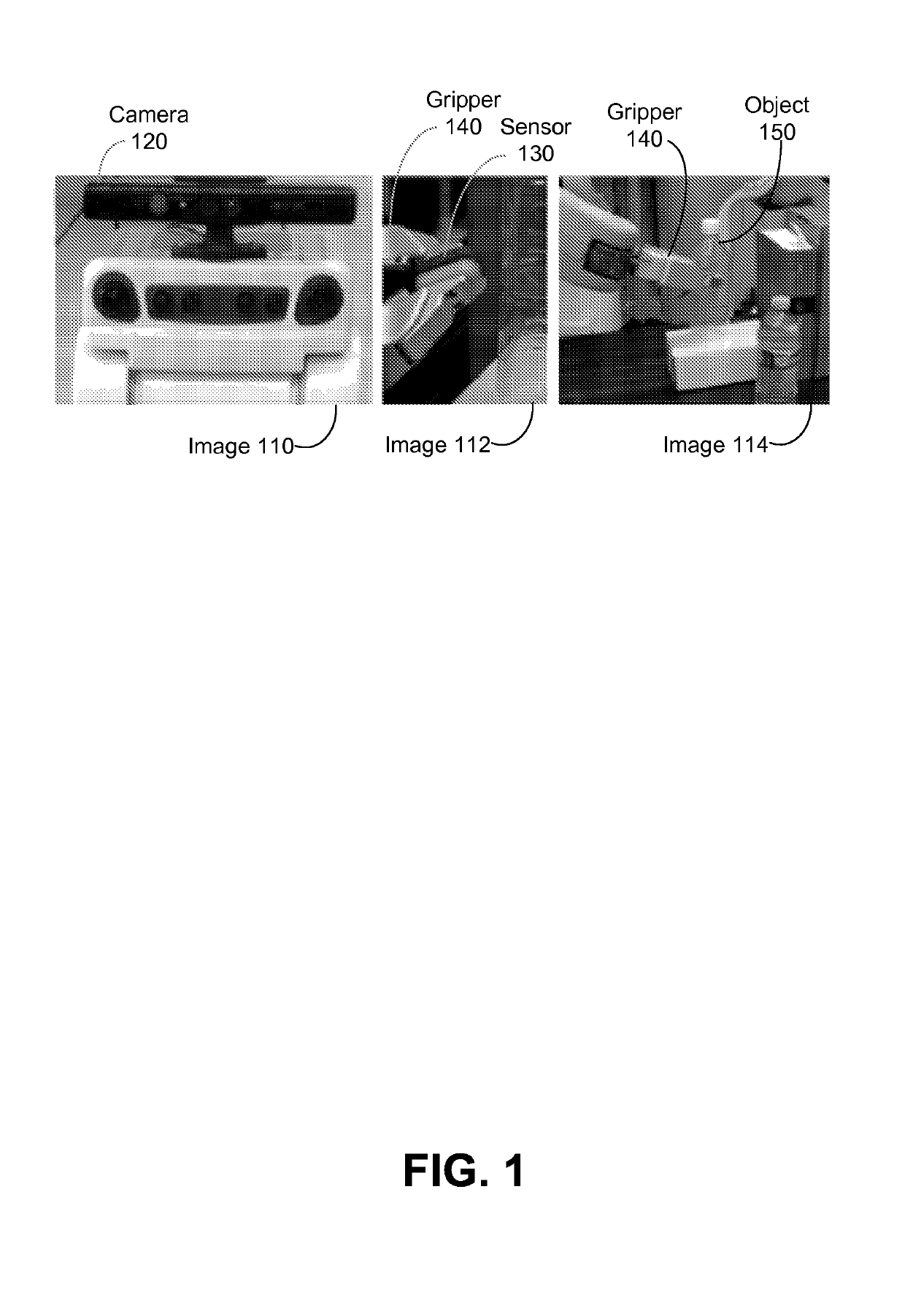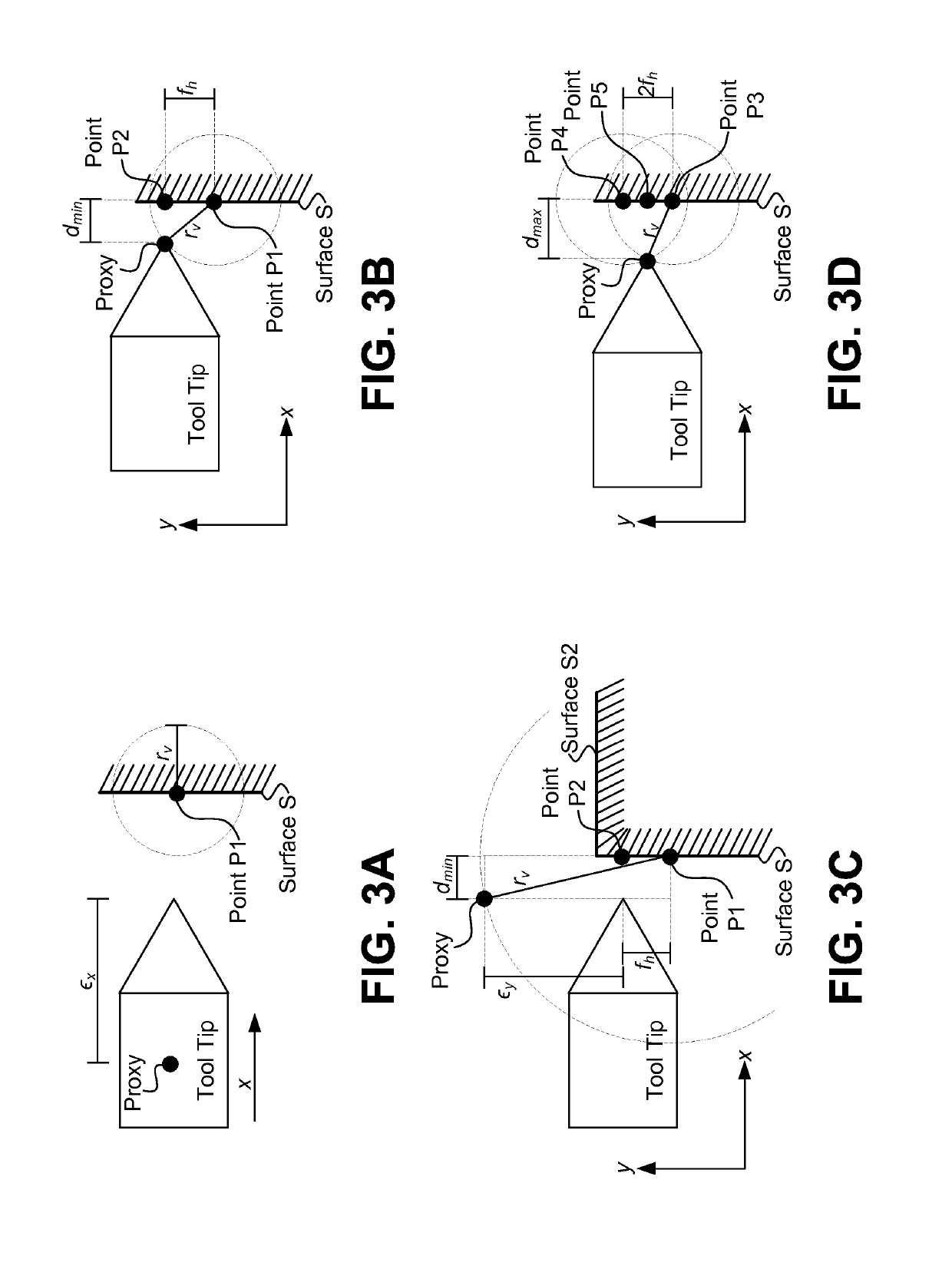Integration of auxiliary sensors with point cloud-based haptic rendering and virtual fixtures
a technology of virtual fixtures and auxiliary sensors, applied in the field of integration of auxiliary sensors with, can solve the problems of direct methods, small penetration rate, and the lik
- Summary
- Abstract
- Description
- Claims
- Application Information
AI Technical Summary
Benefits of technology
Problems solved by technology
Method used
Image
Examples
example experiment
[0135 for Comparing Feedback Modes
[0136]To evaluate the effectiveness of various feedback modes provided to human operators and user-placed guidance fixtures, human operator performances for controlling a remote robot are compared while performing a valve turn task motivated by a disaster recovery scenario related to a gas leak. In the case of a gas leak, remote robotic operation can reduce risk to human responders. Moreover, a robotic device may be better designed to reach cluttered and constrained physical scenarios than a human being. The experiment is intended to evaluate two questions: (1) Do 3D-mapping techniques improve user performance? (2) Do manually-placed virtual haptic fixtures provide additional improvement over 3D-mapping in user performance?
[0137]FIG. 12 shows remote environment 1200 having a valve structure that includes valve 1210, in accordance with an example embodiment. FIG. 12 also depicts two tasks 1220, 1230 performed during the experiment. Task 1220 is shown...
PUM
| Property | Measurement | Unit |
|---|---|---|
| distances | aaaaa | aaaaa |
| distances | aaaaa | aaaaa |
| HIP speed vmax | aaaaa | aaaaa |
Abstract
Description
Claims
Application Information
 Login to View More
Login to View More - R&D
- Intellectual Property
- Life Sciences
- Materials
- Tech Scout
- Unparalleled Data Quality
- Higher Quality Content
- 60% Fewer Hallucinations
Browse by: Latest US Patents, China's latest patents, Technical Efficacy Thesaurus, Application Domain, Technology Topic, Popular Technical Reports.
© 2025 PatSnap. All rights reserved.Legal|Privacy policy|Modern Slavery Act Transparency Statement|Sitemap|About US| Contact US: help@patsnap.com



